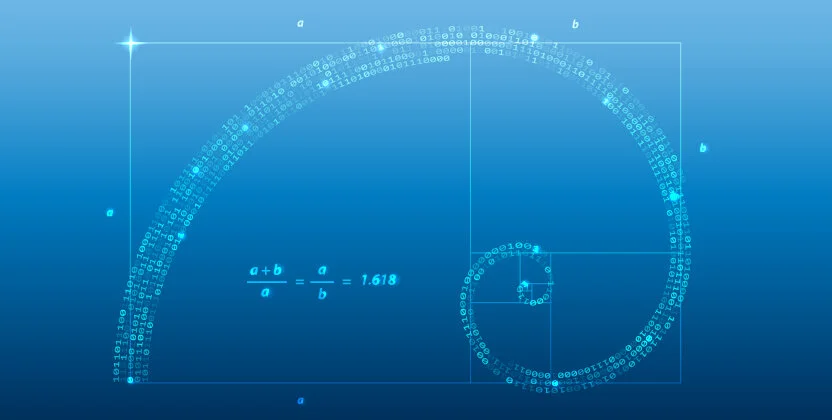What is Phi?
It’s a question that is going to arise in everyone’s mind. Instead of researching through books, wading through loads of websites and Wikipedia and compiling into an interesting article, I think, this excerpt from “The Da Vinci Code‘ by Dan Brown encapsulates my thoughts in a much better way.
After all, Robert Langdon is a much better professor than I am.
Excerpt from Chapter 20, Page 77
He felt himself suddenly reeling back to Harvard, standing in front of his “Symbolism in Art” class, writing his favorite number on the chalkboard.
1.618
Langdon turned to face his sea of eager students. “Who can tell me what this number is?”
A long-legged math major in back raised his hand. “That’s the number PHI.” He pronounced it fee.
“Nice job, Stettner,” Langdon said. “Everyone, meet PHI.”“Not to be confused with PI,” Stettner added, grinning. “As we mathematicians like to say: PHI is one H of a lot cooler than PI!”
Langdon laughed, but nobody else seemed to get the joke.
Stettner slumped.“This number PHI,” Langdon continued, “one-point-six-one-eight, is a very important number in art. Who can tell me why?”
Stettner tried to redeem himself. “Because it’s so pretty?”
Everyone laughed.
“Actually,” Langdon said, “Stettner’s right again. PHI is generally considered the most beautiful number in the universe.”The laughter abruptly stopped, and Stettner gloated.
As Langdon loaded his slide projector, he explained that the number PHI was derived from the Fibonacci sequence—a progression famous not only because the sum of adjacent terms equaled the next term, but because the quotients of adjacent terms possessed the astonishing property of approaching the number 1.618—PHI!
Despite PHI’s seemingly mystical mathematical origins, Langdon explained, the truly mind-boggling aspect of PHI was its role as a fundamental building block in nature. Plants, animals, and even human beings all possessed dimensional properties that adhered with eerie exactitude to the ratio of PHI to 1.
“PHI’s ubiquity in nature,” Langdon said, killing the lights, “clearly exceeds coincidence, and so the ancients assumed the number PHI must have been preordained by the Creator of the universe. Early scientists heralded one-point-six-one-eight as the Divine Proportion.”
“Hold on,” said a young woman in the front row. “I’m a bio major and I’ve never seen this Divine Proportion in nature.”
“No?” Langdon grinned. “Ever study the relationship between females and males in a honeybee community?”
]“Sure. The female bees always outnumber the male bees.”“Correct. And did you know that if you divide the number of female bees by the number of male bees in any beehive in the world, you always get the same number?”
“You do?”
“Yup. PHI.”
The girl gaped. “NO WAY!”
“Way!” Langdon fired back, smiling as he projected a slide of a spiral seashell. “Recognize this?”“It’s a nautilus,” the bio major said. “A cephalopod mollusk that pumps gas into its chambered shell to adjust its buoyancy.”
“Correct. And can you guess what the ratio is of each spiral’s diameter to the next?”
The girl looked uncertain as she eyed the concentric arcs of the nautilus spiral.
Langdon nodded. “PHI. The Divine Proportion. One-point-six-one-eight to one.”
The girl looked amazed.
Langdon advanced to the next slide—a close-up of a sunflower’s seed head. “Sunflower seeds grow in opposing spirals. Can you guess the ratio of each rotation’s diameter to the next?”
“PHI?” everyone said.
“Bingo.” Langdon began racing through slides now—spiraled pinecone petals, leaf arrangement on plant stalks, insect segmentation—all displaying astonishing obedience to the Divine Proportion.
“This is amazing!” someone cried out.
“Yeah,” someone else said, “but what does it have to do with art?”“Aha!” Langdon said. “Glad you asked.” He pulled up another slide—a pale yellow parchment displaying Leonardo da Vinci’s famous male nude—The Vitruvian Man—named for Marcus Vitruvius, the brilliant Roman architect who praised the Divine Proportion in his text De Architectura.
“Nobody understood better than Da Vinci the divine structure of the human body. Da Vinci actually exhumed corpses to measure the exact proportions of human bone structure. He was the first to show that the human body is literally made of building blocks whose proportional ratios always equal PHI.”
Everyone in class gave him a dubious look.
“Don’t believe me?” Langdon challenged. “Next time you’re in the shower, take a tape measure.”
A couple of football players snickered.
“Not just you insecure jocks,” Langdon prompted. “All of you. Guys and girls. Try it. Measure the distance from the tip of your head to the floor. Then divide that by the distance from your belly button to the floor. Guess what number you get.”
“Not PHI!” one of the jocks blurted out in disbelief.
“Yes, PHI,” Langdon replied. “One-point-six-one-eight. Want another example? Measure the distance from your shoulder to your fingertips, and then divide it by the distance from your elbow to your fingertips. PHI again. Another? Hip to floor divided by knee to floor. PHI again. Finger joints. Toes. Spinal divisions. PHI. PHI. PHI. My friends, each of you is a walking tribute to the Divine Proportion.”
Even in the darkness, Langdon could see they were all astounded. He felt a familiar warmth inside. This is why he taught. “My friends, as you can see, the chaos of the world has an underlying order. When the ancients discovered PHI, they were certain they had stumbled across God’s building block for the world, and they worshipped Nature because of that. And one can understand why. God’s hand is evident in Nature, and even to this day there exist pagan, Mother Earth-revering religions. Many of us celebrate nature the way the pagans did, and don’t even know it. May Day is a perfect example, the celebration of spring… the earth coming back to life to produce her bounty. The mysterious magic inherent in the Divine Proportion was written at the beginning of time. Man is simply playing by Nature’s rules, and because art is man’s attempt to imitate the beauty of the Creator’s hand, you can imagine we might be seeing a lot of instances of the Divine Proportion in art this semester.”
Over the next half hour, Langdon showed them slides of artwork by Michelangelo, Albrecht Dürer, Da Vinci, and many others, demonstrating each artist’s intentional and rigorous adherence to the Divine Proportion in the layout of his compositions. Langdon unveiled PHI in the architectural dimensions of the Greek Parthenon, the pyramids of Egypt, and even the United Nations Building in New York. PHI appeared in the organizational structures of Mozart’s sonatas, Beethoven’s Fifth Symphony, as well as the works of Bartók, Debussy, and Schubert. The number PHI, Langdon told them, was even used by Stradivarius to calculate the exact placement of the f-holes in the construction of his famous violins.
“In closing,” Langdon said, walking to the chalkboard, “we return to symbols” He drew five intersecting lines that formed a five-pointed star. “This symbol is one of the most powerful images you will see this term. Formally known as a pentagram—or pentacle, as the ancients called it—this symbol is considered both divine and magical by many cultures. Can anyone tell me why that might be?”
Stettner, the math major, raised his hand. “Because if you draw a pentagram, the lines automatically divide themselves into segments according to the Divine Proportion.”
Langdon gave the kid a proud nod. “Nice job. Yes, the ratios of line segments in a pentacle all equal PHI, making this symbol the ultimate expression of the Divine Proportion. For this reason, the five-pointed star has always been the symbol for beauty and perfection associated with the goddess and the sacred feminine.”
I hold no copyright over the text mentioned in the Block quote above. Attribute it to Dan Brown, the master story teller.

